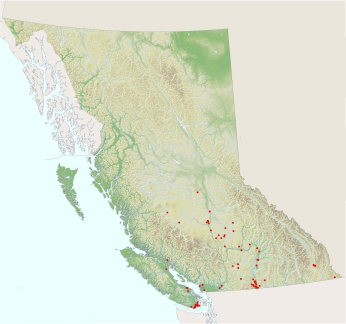The largest dragonfly family in our region – 24 species in eight genera live here and one other species in another genus is a rare visitor. They come in many sizes and colours, many with bold wing markings or coloured veins. Their eyes meet broadly on top of the head. The anal loop in the hindwing is distinctive: foot-shaped with a long toe. Most common around ponds, marshy lakeshores and sluggish streams, the adults dart about and most species spend a lot of time perched horizontally in the sun. Females lay eggs alone or in the company of guarding males. Most dip the tip of their abdomen into the water when releasing the eggs, but some will tap or splash the eggs into wet mud or moss, or simply flick them into a dry pond basin. Some larvae, like those of the emeralds, move sluggishly or squat on the bottom mud; others climb in vegetation.
|
Uncommon. Develops in a variety of still-water habitats, including marshes, sedge fens and saline grassland ponds, which often dry up in summer. Females lay eggs in water or on the beds of dry pools.
|
|
